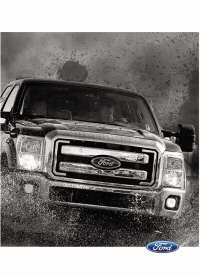This view of the Owner’s Manual contains the very latest information, which may vary slightly from the printed Owner’s Manual originally provided with your vehicle. It may also describe content that is not on or operates differently on your vehicle. Please consider the Owner’s Manual originally provided with your vehicle as the primary source of information for your vehicle.

The information contained in this publication was correct at the time of release.In the interest of continuous development, we reserve the right to change specifications, design or equipment at any time without notice or obligation.No part of this publication may be reproduced, transmitted, stored in a retrieval system or translated into any language in any form by any means without our written permission.Errors and omissions excepted.
Copyright © 2024 Ford Motor Company
Towing the Vehicle on Four Wheels
Emergency Towing
If your vehicle becomes inoperable (without access to wheel dollies, car-hauling trailer, or flatbed transport vehicle), it can be flat-towed (all wheels on the ground, regardless of the powertrain and transmission configuration) under the following conditions:- Your vehicle is facing forward for towing in a forward direction.
- Place the transmission in position N. If you cannot move the transmission into N, you may need to override it. See Transmission.
- Maximum speed is 35 mph (56 km/h).
- Maximum distance is 50 mi (80 km).
 WARNING:
If your vehicle has a steering wheel lock make sure the ignition is in the accessory or on position when being towed.
WARNING:
If your vehicle has a steering wheel lock make sure the ignition is in the accessory or on position when being towed. |
Recreational Towing
Note:
Put your climate control system in recirculated air mode to prevent exhaust fumes from entering your vehicle. See
Climate Control.
Follow these guidelines if you have a need for recreational towing, such as towing your vehicle behind a motorhome. We designed these guidelines to prevent damage to your transmission.
Two-wheel Drive Vehicles and Four-wheel Drive Vehicles Equipped with an Electronic-shift Transfer Case
Do not tow your vehicle with any wheels on the ground, as vehicle or transmission damage may occur. It is recommended to tow your vehicle with all four (4) wheels off the ground, such as when using a car-hauling trailer. Otherwise, you cannot tow your vehicle.
Four-wheel Drive Vehicles Equipped with a Manual-shift Transfer Case
- Put the transmission in position N.
- Put the transfer case in position N.
- Put the hub locks in the FREE position. Always make sure that both hub locks are set to the same position.
Thank You For Your Feedback
